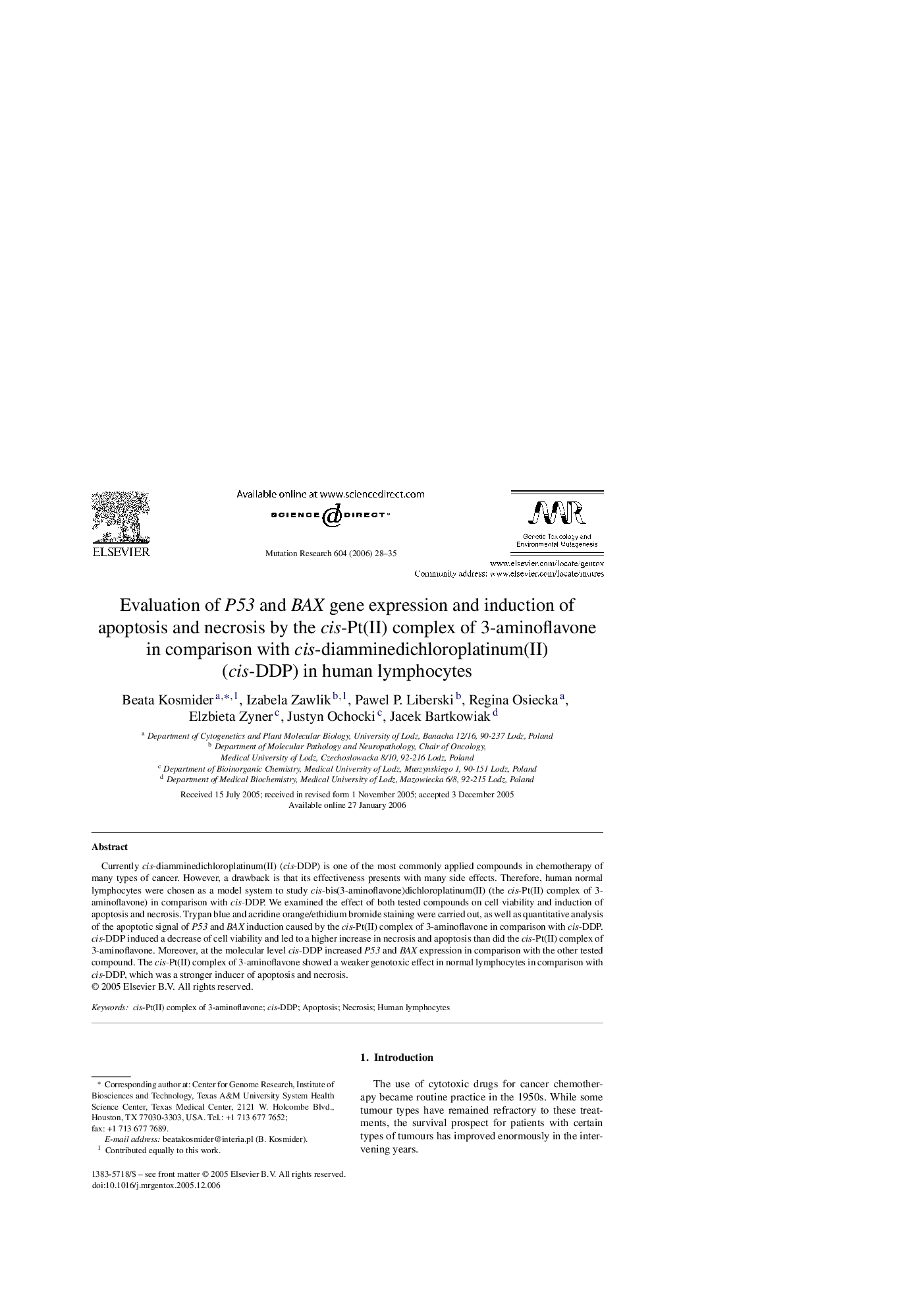| Article ID | Journal | Published Year | Pages | File Type |
|---|---|---|---|---|
| 2149480 | Mutation Research/Genetic Toxicology and Environmental Mutagenesis | 2006 | 8 Pages |
Currently cis-diamminedichloroplatinum(II) (cis-DDP) is one of the most commonly applied compounds in chemotherapy of many types of cancer. However, a drawback is that its effectiveness presents with many side effects. Therefore, human normal lymphocytes were chosen as a model system to study cis-bis(3-aminoflavone)dichloroplatinum(II) (the cis-Pt(II) complex of 3-aminoflavone) in comparison with cis-DDP. We examined the effect of both tested compounds on cell viability and induction of apoptosis and necrosis. Trypan blue and acridine orange/ethidium bromide staining were carried out, as well as quantitative analysis of the apoptotic signal of P53 and BAX induction caused by the cis-Pt(II) complex of 3-aminoflavone in comparison with cis-DDP. cis-DDP induced a decrease of cell viability and led to a higher increase in necrosis and apoptosis than did the cis-Pt(II) complex of 3-aminoflavone. Moreover, at the molecular level cis-DDP increased P53 and BAX expression in comparison with the other tested compound. The cis-Pt(II) complex of 3-aminoflavone showed a weaker genotoxic effect in normal lymphocytes in comparison with cis-DDP, which was a stronger inducer of apoptosis and necrosis.
